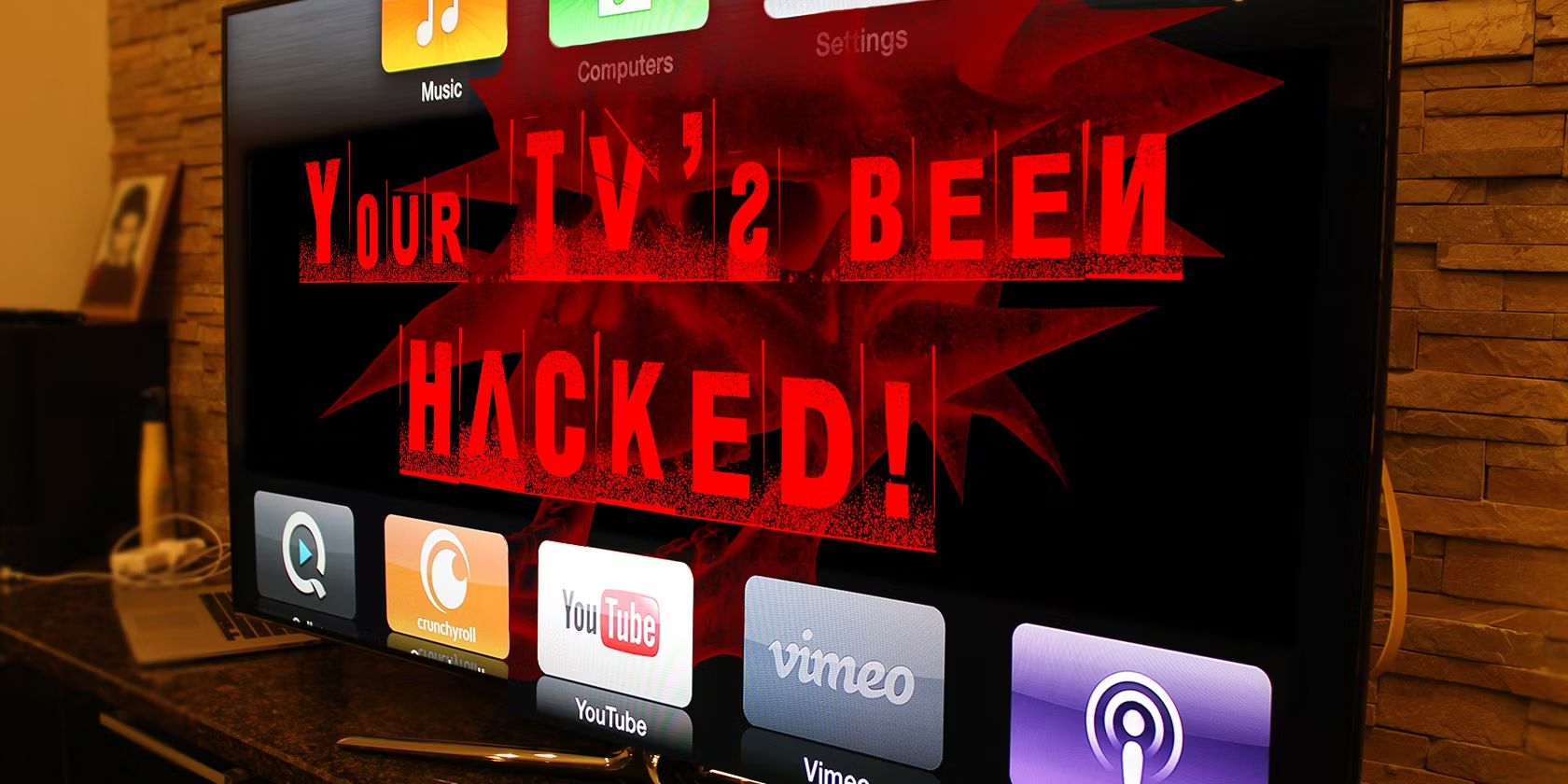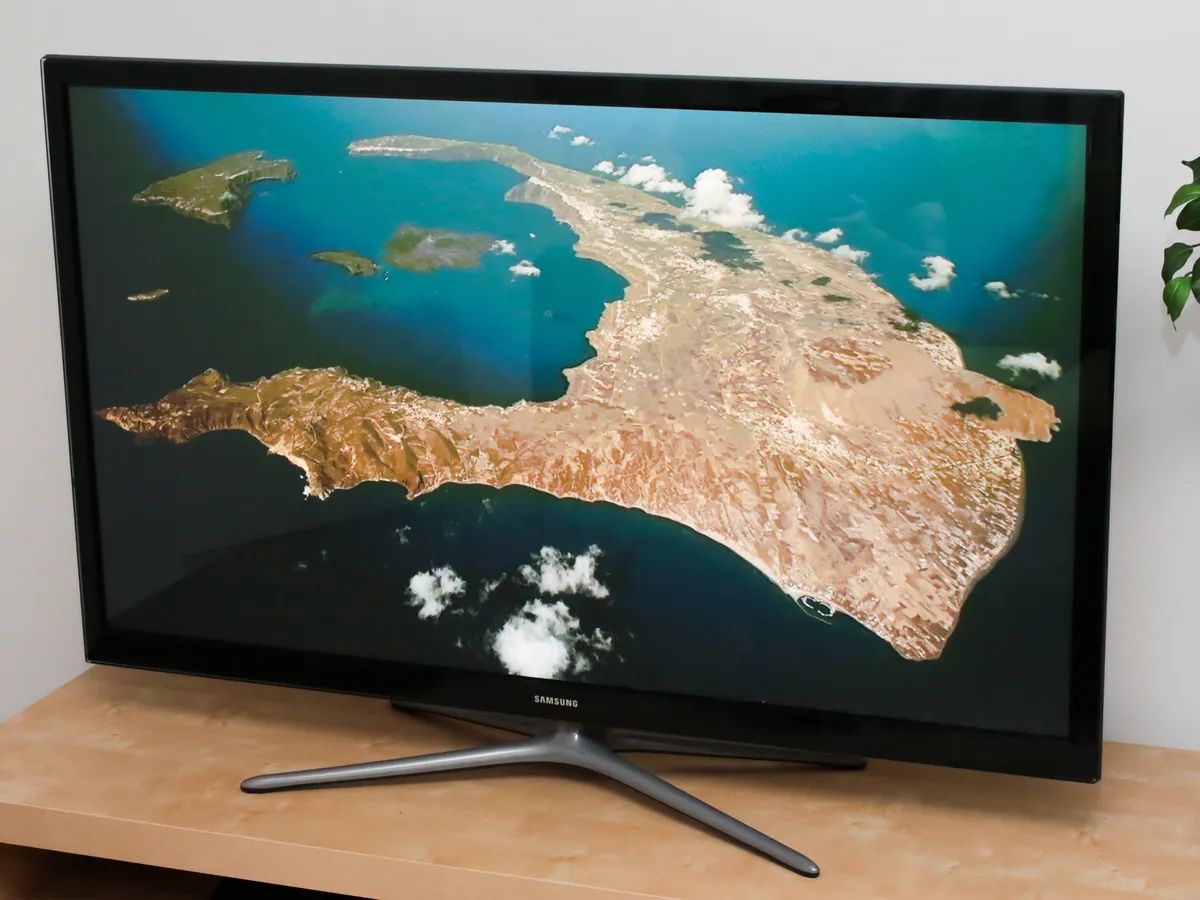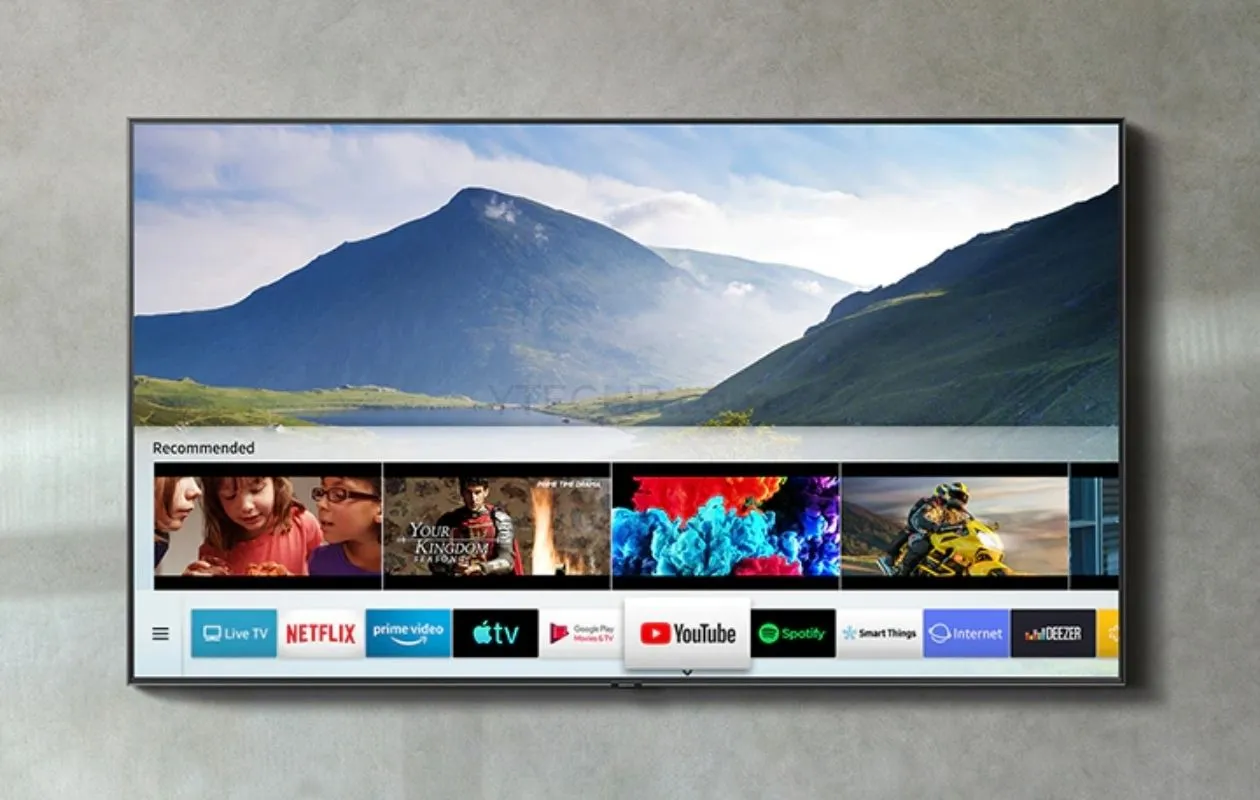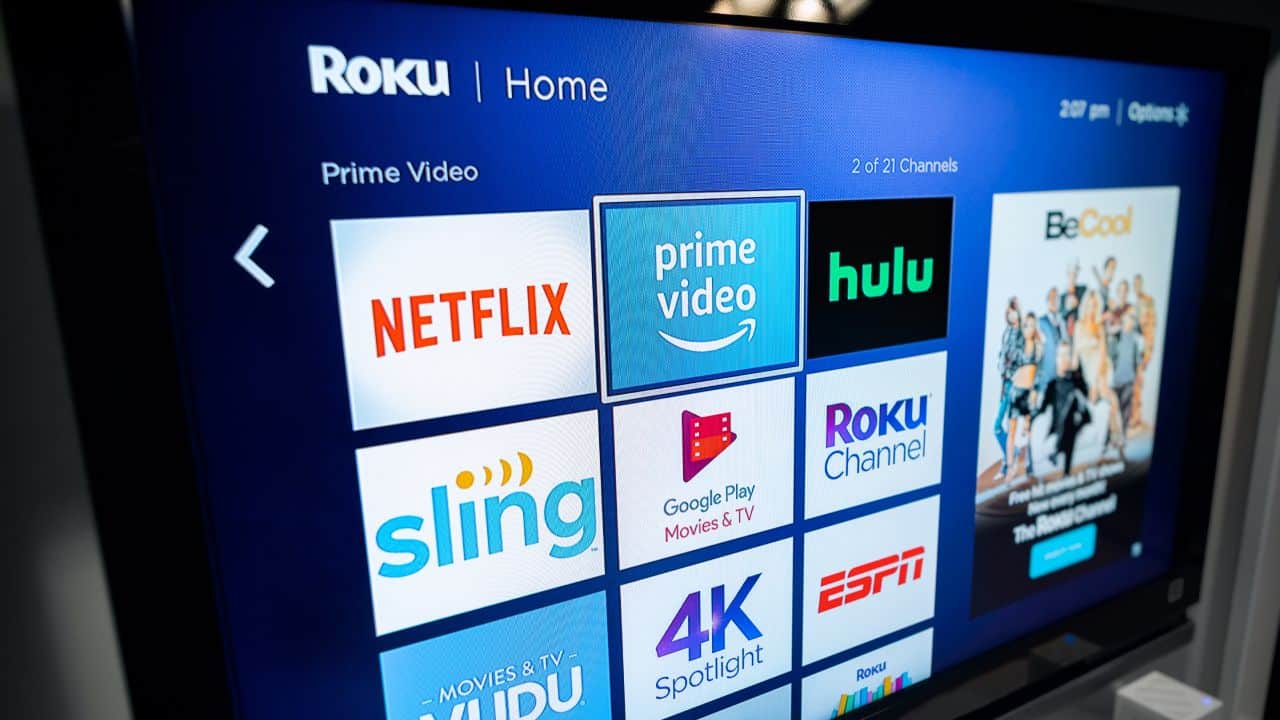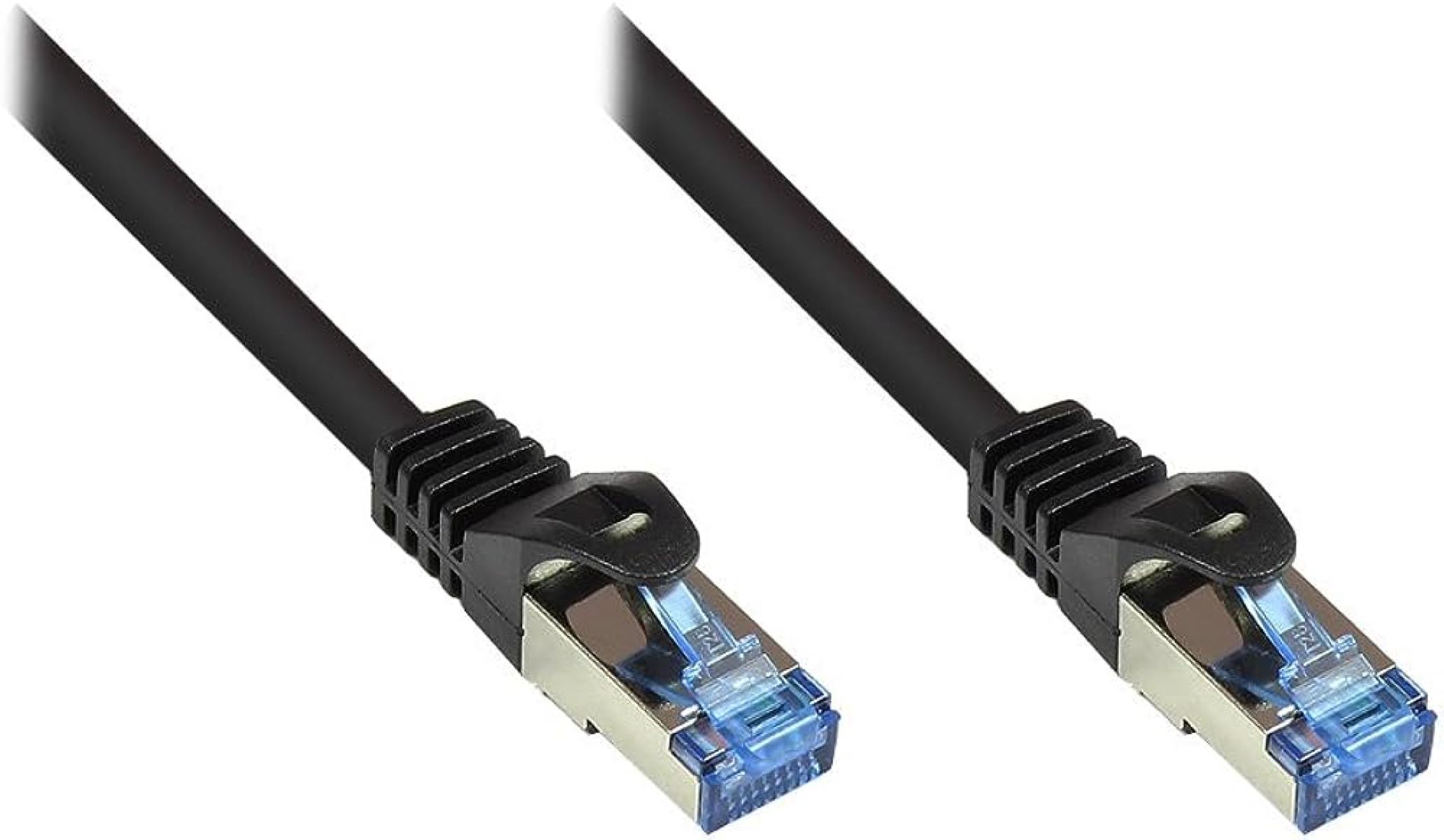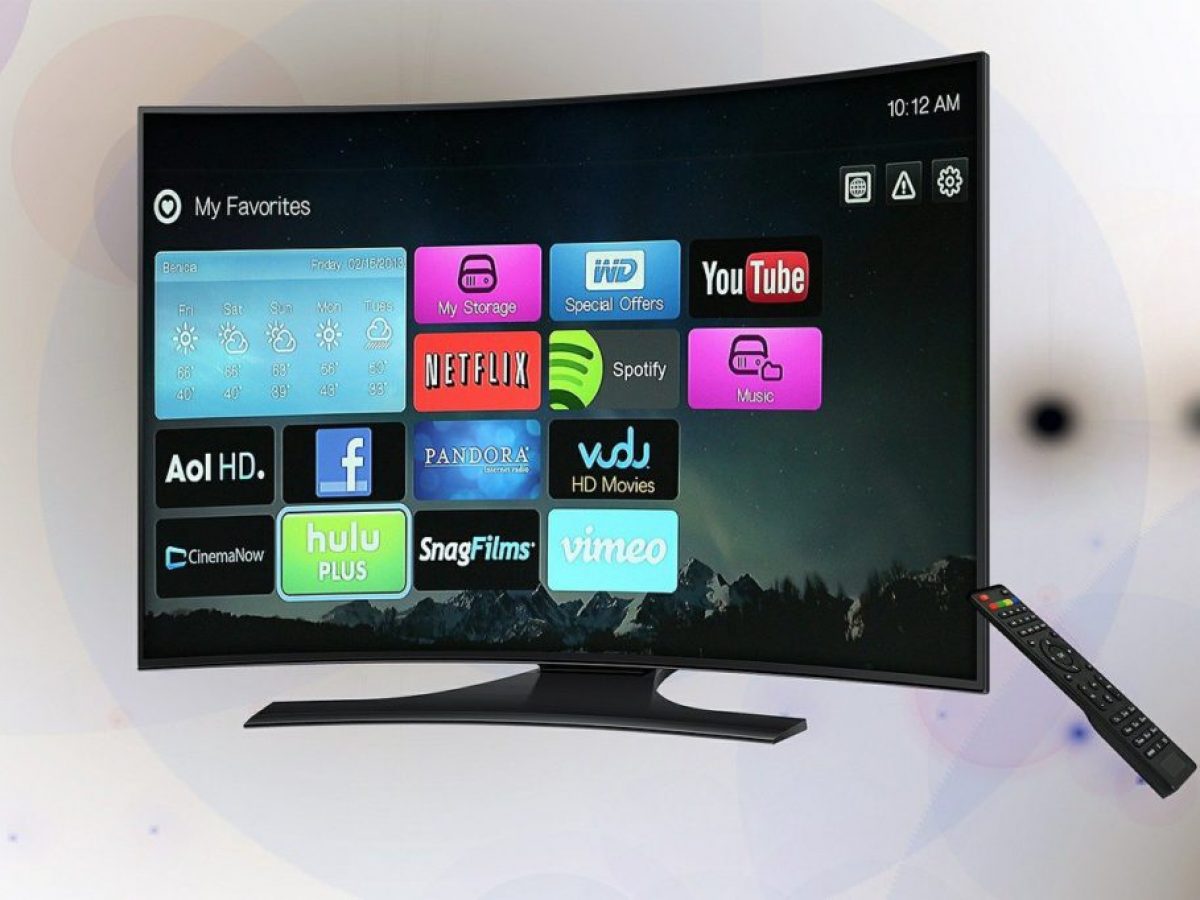Introduction
Welcome to the world of smart TVs, where technology and entertainment converge to bring a seamless and immersive viewing experience right into the comfort of our homes. These internet-connected devices offer a range of features, from streaming our favorite shows and movies to browsing the web and accessing social media platforms. However, as with any smart device, there is a potential for security risks, including the possibility of your smart TV being hacked.
While it may be unsettling to think about, it is important to be aware of the signs that your smart TV may have been compromised. These signs include strange pop-up messages or ads appearing on your screen, your TV turning on or off on its own, or even unauthorized remote control access. If you suspect that your smart TV has been hacked, taking immediate action is crucial to protect your privacy and security.
In this article, we will explore the steps you can take to address a hacked smart TV. From disconnecting your TV from the internet to updating its firmware and implementing stronger security measures, we will guide you through the process of safeguarding your smart TV and preventing future vulnerabilities.
It’s important to note that while we will provide general guidelines, the specific steps may vary depending on the make and model of your smart TV. It’s always a good idea to consult your TV’s user manual or contact the manufacturer for detailed instructions tailored to your device.
So, if you suspect that your smart TV has fallen victim to a hack, read on to learn how to reclaim control of your device and ensure your privacy and security in the digital age.
Recognizing the signs of a hacked smart TV
With the increasing prevalence of smart TVs, it’s important to be vigilant and aware of the signs that may indicate your device has been hacked. By recognizing these signs early on, you can take the necessary steps to mitigate the potential risks and protect your privacy. Here are some common signs that your smart TV may have been compromised:
- Unusual pop-ups or ads: If you notice an influx of pop-up messages or unexpected advertisements appearing on your smart TV screen, it could be a sign that your device has been compromised. These ads may be unrelated to the content you are watching and may redirect you to suspicious websites.
- Automatic device shutdown or restart: If your smart TV turns on or off on its own, or if it restarts without any input from you, it’s possible that someone has gained unauthorized access to your device. This could be a red flag indicating a potential hack.
- Remote control malfunction: If your TV’s remote control behaves erratically, such as buttons not responding or the device not recognizing commands, it may indicate that an external party has gained control over your smart TV.
- Changes in settings or accounts: If you notice unfamiliar changes in your smart TV’s settings, such as altered display settings, audio preferences, or even added user accounts, it could be a sign that someone has tampered with your device.
- Unusual network activity: Monitoring your home network for unusual network activity can also help identify if your smart TV is being accessed without your knowledge. Look for significant and unexpected increases in data usage or irregular connections to unknown devices.
If you note any of these signs, it’s important not to panic, but to take immediate action to address the situation. By recognizing the signs early on, you can take the appropriate measures to secure your smart TV and prevent further unauthorized access.
In the next sections, we will explore various actions you can take if you suspect that your smart TV has been hacked. Remember, it’s always best to consult your device’s user manual or contact the manufacturer for specific instructions tailored to your smart TV model.
Disconnecting your smart TV from the internet
If you suspect that your smart TV has been hacked, one of the first steps you should take is to disconnect it from the internet. By disconnecting your smart TV from the internet, you can prevent any further unauthorized access to your device and mitigate potential security risks. Here’s how you can do it:
- Using the Wi-Fi settings: Access the settings menu on your smart TV and navigate to the network or Wi-Fi settings. From there, you can select your network connection and choose to disconnect or forget the network. This will sever the internet connection to your smart TV.
- Using the physical connection: If your smart TV is connected to the internet via an Ethernet cable, simply unplug the cable from the back of your TV or from the router. This will disconnect your TV from the internet.
- Disabling Wi-Fi altogether: Some smart TVs come with a physical switch or button that allows you to disable the Wi-Fi functionality. Check your TV’s manual or look for the Wi-Fi on/off option in the settings menu to disable the Wi-Fi connection.
Keep in mind that disconnecting your smart TV from the internet may limit certain functionalities, such as streaming apps or accessing online content. However, it is a temporary measure to isolate your device and protect it from further intrusion.
Once you have disconnected your smart TV from the internet, it’s important to assess the situation and consider the next steps for securing your device. This may include updating the firmware, resetting to factory settings, or implementing stronger security measures, which we will explore in the following sections.
Remember, if you are unsure about the specific steps or need assistance, consult your smart TV’s user manual or reach out to the manufacturer for guidance tailored to your specific device.
Updating the firmware on your smart TV
Ensuring that your smart TV has the latest firmware is a crucial step in addressing a potential hack. Manufacturers regularly release firmware updates that include security patches and bug fixes to safeguard against vulnerabilities. By updating the firmware on your smart TV, you can strengthen its security and protect it from potential hacks. Here’s how you can update the firmware:
- Check for updates: Access the settings menu on your smart TV and look for a section that allows you to check for updates. It may be labeled as “Software Update” or “Firmware Update.” Select that option to initiate the update process.
- Enable automatic updates: Some smart TVs have an option to enable automatic firmware updates. If available, it is recommended to enable this feature to ensure that your TV stays up to date with the latest security patches without manual intervention.
- Connect to a computer: In some cases, you may need to connect your smart TV to a computer using an HDMI cable or a USB drive to update the firmware. Follow the instructions provided by the manufacturer for this method.
During the firmware update process, it is important not to turn off your smart TV or interrupt the update. Allow the update to complete fully before using your TV again. This process may take some time, so be patient.
Updating the firmware on your smart TV not only ensures that you have the latest security patches but also enhances the overall performance and features of your device. By keeping your TV’s software up to date, you are proactively addressing potential vulnerabilities and minimizing the risk of a hack.
It’s worth noting that firmware update procedures may vary between different smart TV models and manufacturers. If you need specific instructions tailored to your device, refer to your TV’s user manual or contact the manufacturer for assistance.
Resetting your smart TV to factory settings
If you suspect that your smart TV has been hacked and you’ve taken the initial measures to disconnect it from the internet and update the firmware, but the issue still persists, resetting your TV to factory settings may be the next step to consider. This process will restore your smart TV to its original settings, erasing all stored data, apps, and customizations. Here’s how you can reset your smart TV:
- Access the settings menu: Navigate to the settings menu on your smart TV. The exact location and naming of the option may vary depending on the make and model of your TV. Look for options like “System,” “Reset,” or “General.”
- Choose the factory reset option: Within the settings menu, locate the factory reset option. Typically, this option will be labeled as “Factory Reset,” “Reset to Default,” or something similar. Select this option to initiate the reset process.
- Confirm the reset: A confirmation prompt will appear on your screen, notifying you that all data and settings will be erased. Read the prompt thoroughly and follow the on-screen instructions to confirm the reset.
- Wait for the reset to complete: Once you’ve confirmed the reset, your smart TV will begin the process of restoring factory settings. This process may take a few minutes, so be patient and avoid turning off the TV until it has completed.
After the reset is complete, your smart TV will be restored to its original state, just like when you first purchased it. You will need to set up the TV again, including connecting it to the internet and logging into your accounts.
Resetting your smart TV to factory settings can be an effective measure to eliminate any lingering security threats that may have been present after a potential hack. However, keep in mind that this process will erase all data and settings, so ensure you have backed up any important information before proceeding.
As always, consult your TV’s user manual or contact the manufacturer for specific instructions if you have any doubts or need further guidance on resetting your smart TV.
Changing passwords and setting up strong security measures
After taking the steps to disconnect your smart TV from the internet, update the firmware, and reset it to factory settings, it is crucial to strengthen the security of your device by implementing strong passwords and other security measures. By doing so, you can significantly reduce the risk of future hacks and protect your privacy. Here are some important actions you can take:
- Change your Wi-Fi password: Start by changing the password of your home Wi-Fi network. This will prevent any unauthorized access to your internet connection, ensuring that only trusted devices can connect.
- Secure your smart TV login: If your smart TV requires a login or has a user account associated with it, make sure to change the password for that account. Use a strong, unique password that consists of a combination of uppercase and lowercase letters, numbers, and special characters.
- Enable two-factor authentication (2FA): If your smart TV supports 2FA, enable this additional layer of security. With 2FA, you will need to provide a unique verification code, usually sent to your mobile device, in addition to your password when logging in.
- Regularly update passwords: Make it a habit to periodically change your passwords for both your Wi-Fi network and your smart TV account. Set a reminder to update them every few months to maintain strong security practices.
- Disable unnecessary features: Review the settings on your smart TV and disable any unnecessary features or services that you do not use. By reducing the attack surface, you minimize the potential vulnerabilities that hackers can exploit.
- Use a virtual private network (VPN): Consider using a VPN to encrypt your internet connection and protect your privacy. A VPN can provide an added layer of security, especially when accessing streaming services or other online content.
- Keep your TV software up to date: Regularly check for firmware updates for your smart TV and install them promptly. These updates often include security patches that address known vulnerabilities.
By implementing these security measures, you can significantly enhance the protection of your smart TV and reduce the likelihood of future security breaches. Additionally, make sure that all other connected devices in your home network, such as smartphones, tablets, and computers, also follow strong security practices to create a secure ecosystem.
Remember, the specific options and settings may vary depending on your smart TV model, so consult your TV’s user manual or reach out to the manufacturer for guidance tailored to your device.
Monitoring your smart TV for future vulnerabilities
Even after taking steps to secure your smart TV, it’s important to stay vigilant and monitor your device for any potential vulnerabilities or suspicious activities. By actively monitoring your smart TV, you can detect and address any security risks before they escalate. Here are some best practices for monitoring your smart TV:
- Regularly check for firmware updates: Manufacturers often release firmware updates to address new vulnerabilities and improve security. Make it a habit to check for updates regularly and install them as soon as they become available.
- Monitor network traffic: Keep an eye on the network traffic flowing to and from your smart TV. If you notice any unusual spikes in data usage or suspicious connections to unfamiliar IP addresses, it may be an indication of a security breach.
- Review app permissions: Periodically review the permissions granted to the apps installed on your smart TV. Ensure that they have appropriate access to your personal information and location. Remove any unnecessary apps or those you no longer use.
- Be cautious of phishing attempts: Watch out for any suspicious emails or messages pretending to be from your smart TV manufacturer or service providers. Hackers may attempt to trick you into revealing sensitive information or installing malicious software.
- Monitor your online accounts: Regularly review the activity on your online accounts associated with your smart TV. If you notice any unfamiliar or suspicious login attempts or changes to your account settings, take immediate action to secure your account.
Additionally, keeping an eye on news and security bulletins related to your smart TV manufacturer and model can help you stay informed about any known vulnerabilities or security risks. By staying updated on the latest threats, you can take proactive measures to protect your smart TV and prevent any potential hacks.
If you discover any vulnerabilities or suspect a security breach, report it to your smart TV manufacturer immediately. They can provide guidance on how to address the issue and may release patches or updates to fix the vulnerabilities.
Remember, maintaining a secure smart TV requires not only initial actions but also ongoing monitoring and proactive steps to address any potential vulnerabilities that may arise.
Contacting the manufacturer or a professional for assistance
If you have taken all the necessary steps to address a potential hack on your smart TV but are still experiencing issues or are unsure of what to do next, it may be time to seek assistance from the manufacturer or a professional. Contacting the experts can help you resolve the problem effectively and ensure the security of your smart TV. Here’s what you can do:
- Consult the user manual and support resources: Start by checking the user manual or online support resources provided by the manufacturer. They often contain troubleshooting guides and specific instructions tailored to your smart TV model.
- Visit the manufacturer’s website: Explore the manufacturer’s website for additional support options. Look for FAQs, community forums, or live chat services where you can ask questions and seek assistance from fellow smart TV users or support professionals.
- Contact customer support: If you cannot find a solution to your smart TV issues on your own, reach out to the manufacturer’s customer support team. They are equipped to provide guidance, troubleshoot problems, or escalate the issue if necessary.
- Consider professional assistance: If you prefer hands-on assistance or if the problem persists, you may want to consider contacting a professional in smart TV repairs and security. They have the expertise to diagnose and resolve complex issues and can ensure that your smart TV is secure and functioning optimally.
It’s important to provide as much detail as possible when contacting the manufacturer or a professional. Describe the issues you’re facing, the steps you have taken so far, and any error messages or unusual behaviors you have observed. This will help them better understand and address the problem efficiently.
Remember, each smart TV model and manufacturer may have unique specifications and solutions. Follow their recommendations and instructions closely to ensure you’re taking the most appropriate actions for your specific device.
By contacting the manufacturer or seeking professional assistance, you can receive expert guidance to resolve any lingering issues and ensure the security of your smart TV.
Conclusion
Having a smart TV can elevate your entertainment experience, but it’s crucial to be aware of the potential security risks that come with these internet-connected devices. If you suspect that your smart TV has been hacked or compromised, taking immediate action is essential to protect your privacy and security.
In this article, we’ve explored the steps you can take to address a hacked smart TV. From disconnecting your TV from the internet to updating the firmware, resetting to factory settings, and implementing stronger security measures, each step plays a key role in safeguarding your device.
By recognizing the signs of a hacked smart TV, such as unusual pop-ups, automatic shutdowns, or changes in settings, you can act swiftly and initiate the necessary measures to secure your TV.
Disconnecting your smart TV from the internet is an effective first step in isolating your device and preventing further unauthorized access. Updating the firmware ensures that you have the latest security patches and strengthens your TV’s protection against vulnerabilities.
Resetting your smart TV to factory settings can help eliminate any lingering security threats, while changing passwords and implementing strong security measures add an extra layer of defense against future hacks.
Monitoring your smart TV for potential vulnerabilities and suspicious activities is an ongoing process. By staying vigilant, regularly checking for firmware updates, reviewing app permissions, and being cautious of phishing attempts, you can prevent security breaches.
If you encounter persistent issues or need additional guidance, contacting the manufacturer or seeking professional assistance is recommended. They can provide specific instructions and resolutions tailored to your smart TV model.
Remember, securing your smart TV is an ongoing effort. Stay informed about the latest security practices, keep your devices up to date with firmware updates, and always prioritize strong passwords and safe internet practices.
By following these steps and implementing robust security measures, you can enjoy your smart TV with confidence, knowing that you have taken the necessary precautions to protect your privacy and ensure the security of your device.







